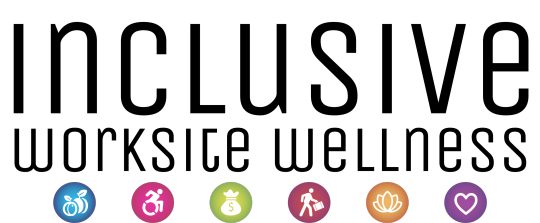Written by NCHPAD
For most of us, the workplace is where we spend the majority of our waking hours. Over many decades, a growing mountain of evidence has shown that worksites that provide wellness programming for their employees enhance worker productivity, reduce health care costs, reduce absenteeism and increase employee knowledge about disease prevention. This of course also holds true for people with disabilities. In May, Global Employee Health and Fitness Month was celebrated with events across the world and this month the awareness continues with Employee Wellbeing Month. As events come and go leaving employees re-charged about staying healthy, we have to ask the tough question of if our wellness programs truly reach all and are we ready to pave the way for health equity in our companies.

Any worksite wellness program requires a commitment to wellness from all levels of an organization and that commitment should be part of the organization’s operation, mission and goals. Title I of the Americans with Disabilities Act requires that employers make reasonable accommodations for employees with disabilities to participate in worksite wellness programs, but it’s important to think beyond just complying with the law, and move towards an environment that is universally designed to be supportive of health promotion for all.
Here are a few suggestions on including employees with disabilities:
- Collect Baseline Information on Inclusion: Obtain baseline information on your organization’s readiness to include people with disabilities. Simple tools such as the one developed by Work Well North Carolina or the Community Health Inclusion Index developed by NCHPAD can help you.
- Create a Company Wellness Committee: A wellness committee is a core component of any worksite wellness program. This group sets the direction of activities and should represent the diversity of your workplace. It’s important to either include workers who have disabilities or consult with a disability organization, such as a Center for Independent Living, to understand how to develop your program so that anyone can participate.
- Promote Inclusive Walking Opportunities: Walking programs, step competitions and the like have become one of the more popular ways of getting employees to move more. Walking competitions can include people with all abilities even workers who use wheelchairs or other mobility devices. NCHPAD has developed a fact sheet on adapting pedometers so that people with mobility limitations can use them. Other walking opportunities include: walking meetings, walking clubs, and making sure marketing of such is inclusive of all. NCHPAD has developed a campaign to rebrand the word walking known as, How I Walk.
- Focus on Inclusive Health Messaging: NCHPAD has developed an Inclusive Health Communication Scorecard to help you evaluate the accessibility of the forms of communication used at your worksite.
- Encourage Everyone to Exercise.: You can be active, even when at your desk! The NCHPAD Deskercise! tool provides movements you can do from your workstation.
Spread the Word!
Share this post with your networks to encourage others to promote inclusion in worksite wellness policies: Get moving towards inclusive worksite wellness with @NCHPAD! More details on the BAYW blog: odphp.tumblr.com.